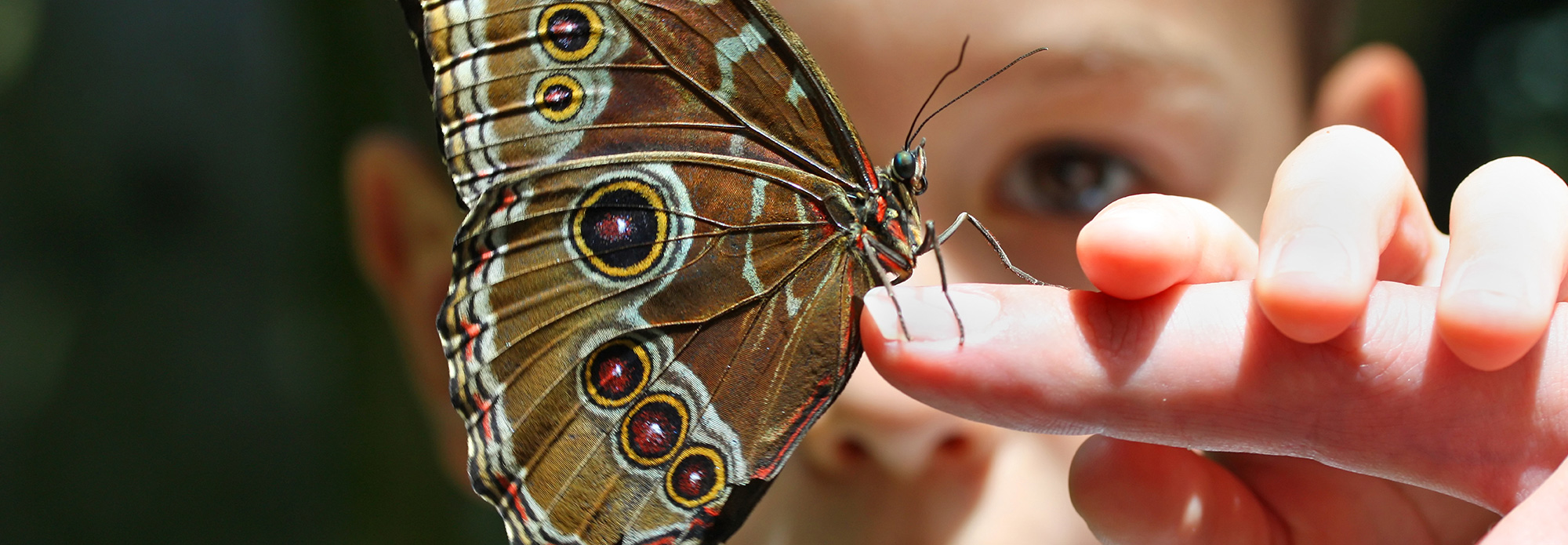The most beautiful thing we can experience is the mysterious. It is the source of all true art and science. He to whom the emotion is a stranger, who can no longer pause to wonder and stand wrapped in awe, is as good as dead; his eyes are closed. ~ Albert Einstein
Standing high up on a mountain, surrounded by endless vistas. Hearing a piece of music that transports you to a different realm. Looking up at the night sky, filled with stars. Gazing at a work of art that speaks to your soul.
These are just some of life’s awe-inspiring experiences, offering a sense of wonder, clarity and perspective. “Awe” refers to a sense of deep wonder, tinged with mystery. You experience it when you come across something vast, mysterious or unusual. Something that transcends your everyday routine and reality. Psychologist Ethan Kross defines it as:
the wonder we feel when we encounter something powerful that we can’t easily explain.
Prior to Covid, our family would try and take multiple pauses in our everyday lives such as mini-vacations to reinvigorate a sense of awe. Since Covid, travel took a backseat. With all the grief and suffering caused by Covid, we had to reframe our perspective. The lockdown gave us more opportunities to reflect and gave us a chance to be more grateful. We tried to create fun moments at home. While we had to make adjustment, we realised that we needed to find a way to keep on finding awe in our lives.
So this week, my message focuses on the power of awe. What benefits does it offer us? And in spite of the big challenges posed by Covid, how can we bring more awe-inspiring moments into our daily lives?
In recent years, there has been a great deal of research in this area. We now know that awe has several benefits, including the following:
1. It reduces stress.
Awe triggers changes in your brain activity, calming mental chatter and lifting you out of anxiety. In his Medium article on the subject, Younes Henni describes the physical effects:
Studies have shown that awe stimulates the parasympathetic nervous system, reducing your stress levels up to several weeks after an awesome experience. Among many positive emotions, such as love, happiness, and curiosity, awe was the strongest modulator of cytokines – a substance in the blood that promotes inflammatory diseases.
2. It activates pro-social behaviours.
As you step back from the self and expand your view, you begin to see yourself as one small part of a much bigger whole. This understanding brings humility and increases pro-social behaviours. You become more generous and charitable, and connect more closely with people around you. According to one study, the simple act of gazing up at tall trees made participants more helpful and less entitled.
3. It triggers innovation.
Feelings of amazement bolster creativity, persistence and the willingness to step outside one’s comfort zone. Scientists have shown that this benefit can even be experienced via a screen. Watching videos that capture the miracles of nature and the cosmos spark curiosity and expand the imagination.
4. It enhances health.
An article published by the Wharton School identifies awe as a wellbeing booster, comparing its usefulness with fitness tools like healthy eating and workouts.
A new Berkeley study reveals that awe can even improve physical and mental health, possibly even lowering the risk of type 2 diabetes, clinical depression, heart disease, and arthritis – benefits similar to those enjoyed by eating right and exercising. As Berkeley psychology professor Dacher Keltner puts it, “Don’t underestimate the power of goosebumps.”
5. It improves decision-making.
Awesome moments enable you to navigate the world more thoughtfully. They help you absorb information, expand your mental models, and stimulate new ways of seeing the world. Experiencing awe also makes you less reliant on cognitive shortcuts. All of which leads to better, smarter decision-making.
6. It brings priorities into focus.
Feelings of transcendence can alter the direction of your life – or simply help keep it aligned with your priorities. As clinical psychologist David Elkins puts it:
Awe is a lightning bolt that marks in memory those moments when the doors of perception are cleansed and we see with startling clarity what is truly important in life.
Are we awe-deprived?
A year and a half into the pandemic, most of us are likely awe-deprived. One of the common ways in which people experience awe is through travel, a privilege that has been largely taken away recent times.
A shortage of awe-inspiring moments can make us feel joyless and less connected to other people. A few weeks ago, I talked about the “languishing feeling” brought on by the pandemic, characterised by aimlessness and stagnation. Surely, languishing is at least partially caused by the long absence of awe in our lives. Without the opportunity to soak in the wonder that elevates life above its everyday rigours and routines, many people find themselves stuck in a rut, unable to muster up enthusiasm or find meaning in the mundane. The antidote, then, is to bring awe back into our lives.
Awe is good for workplaces – and leaders.
A state of awe drives creativity, generosity and wellbeing. No wonder forward-thinking businesses are starting to recognise its value.
According to a Harvard Business Review article:
Some scientists theorize that [awe] has evolved to aid group cohesion and provide survival advantages. For work groups experiences of awe can lead to increased collaboration, team building, and social connection.
Some companies are trying induce awe within the workplace through architecture and design. Facebook’s Bay Area facility boasts a nine-acre green roof. The Google office in Tel Aviv features a lifelike orange grove and cobblestone flooring, while HubSpot in Massachusetts conjures up forests and clouds through wallpaper.
Experiencing awe is also good for leaders. The activation of pro-social behaviours makes you more open and willing to engage with team members, while the expansion of mental models allow you to consider broader perspectives and make better decisions. Last but not least, experiencing awe is a great way to recharge your reserves of energy, resiliency and gratitude.
Here are four suggestions to help you tap into the power of awe.
1. Find wonder in your home city.
Travel is a great way to experience awe. But what about the long periods between trips, especially given the current restrictions? When you live in a bustling city, majestic mountains and lush rainforests seem very far away indeed! But even urban jungles offer opportunities for awe; it’s just a matter of finding them.
Make your way to a rooftop where you can see the colours of sunset or the night sky. Those in coastal areas can head to the seaside for some quiet contemplation by the waves. Is there a botanical garden or biodiversity park in your city? Witnessing the miracles of trees, plants and flowers is a great way to induce a state of awe. Besides nature, you can also explore human achievements that resonate with you – from futuristic buildings and bridges, to ancient monuments.
2. Build awe into the everyday.
Micro-doses of awe help you harness its benefits on an ongoing basis. Bring photographs of nature’s vast landscapes into your workspace, or create an awe-inspiring playlist. Experts also recommend going for regular “awe walks”. If you have easy access to a garden or park, that’s perfect. If not, the HBR authors provide some helpful guidance:
Take twenty minutes to wander and be curious and observe the everyday beauty around you, even in a familiar place like your yard or neighborhood. In our workshops, this instruction helps people to notice others, as well as places and things they might typically rush past – a bee flitting from flower to flower, for example. Afterwards our participants report feeling inspired, calmer, and better able to focus.
3. Leverage technology.
While it’s best to experience wonder without the distractions of your smartphone or laptop, it isn’t always possible to make your way to an appropriately awe-inspiring place. (Just think of the multiple lockdowns over the past 18 months!) If you can’t get away, why not access the wonders at your fingertips? Watch a nature documentary, create your very own awe-state playlist, or browse online magazines and websites for inspiring stories.
4. Share awe experiences in groups.
One way to foster a sense of awe at the workplace is to create a space for teams to share stories and experiences around awe. A simple way to do this is to begin meetings with questions like “What amazed you this week?” or “Was there something that sparked your curiosity?”. The Wharton School article also suggests the following:
In your workplace, incorporate testimonial stories of inspirational leaders, share your own experiences of awe, and encourage team members to do the same.
Experiencing awe can catapult you out of a mental rut and break down the barriers created by everyday routines. Feelings of transcendence shift your sense of self, igniting humility, generosity, and interpersonal connection. A state of awe also opens up new ways of thinking and learning, which ultimately leads to better decision-making – a benefit that is particularly relevant for leaders. The limitations placed on us by the pandemic have left us hungry for awe-inspiring experiences. It is time to bring this much-needed sense of wonder back into our lives.








Comments